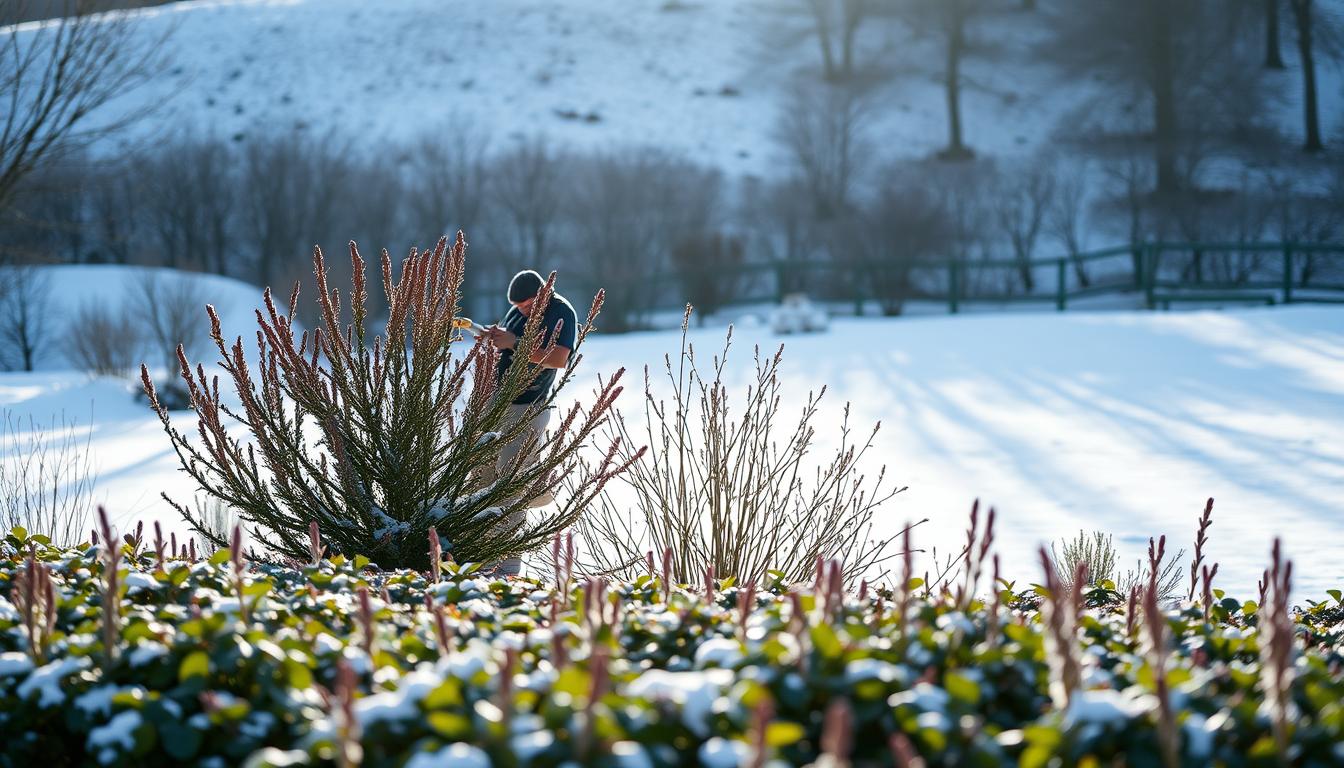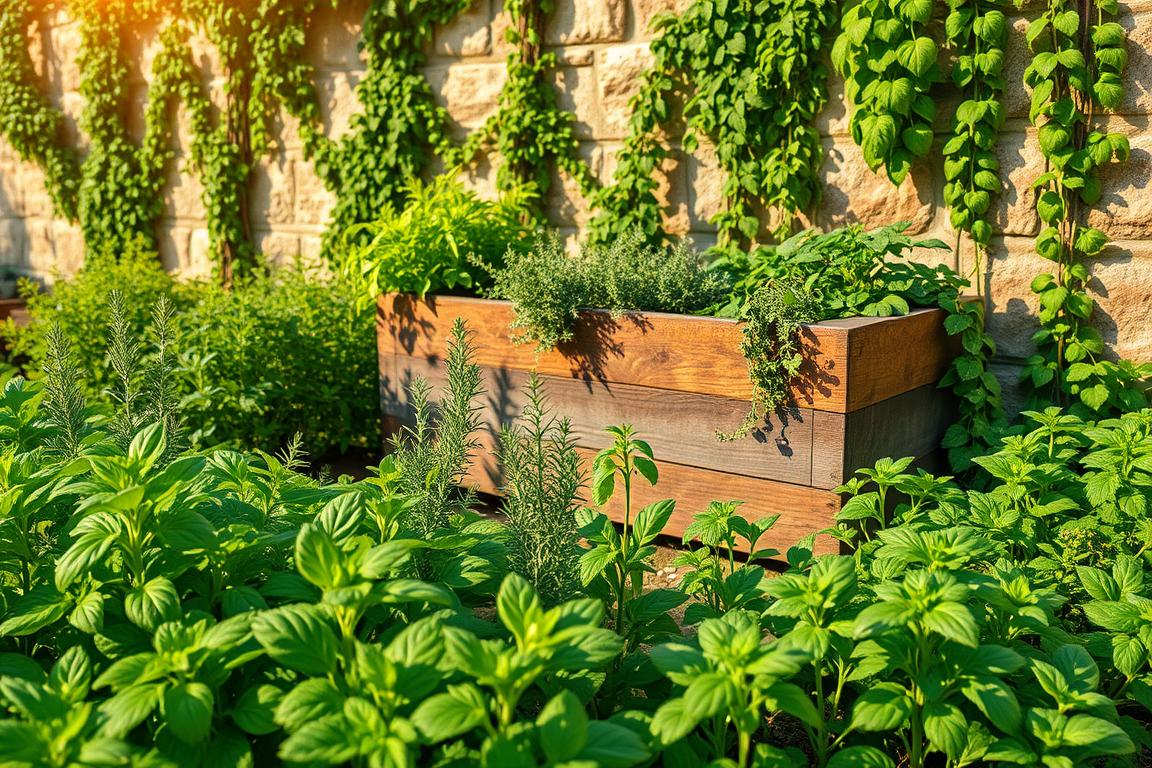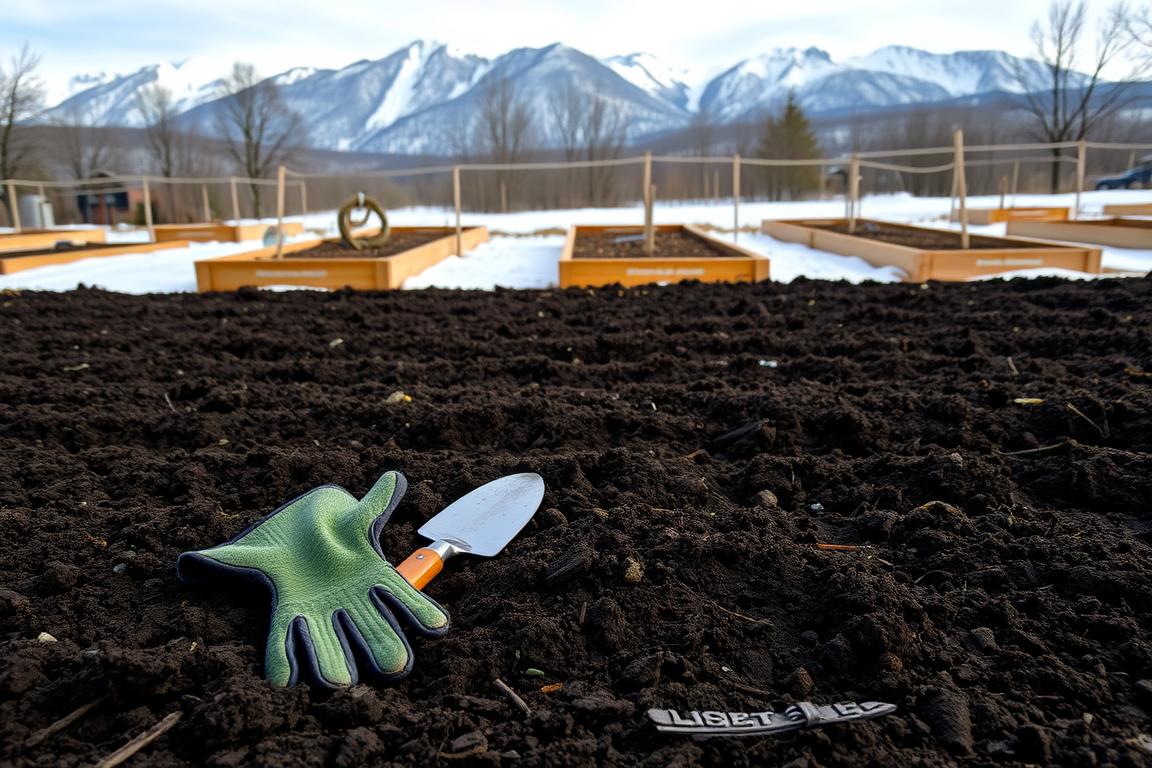Winter gardening is all about a good pruning plan. February is perfect for pruning many plants. Our guide will help you keep your garden healthy and looking great. We’ll cover the best plants for winter pruning and share tips for garden care.
Our aim is to help you create a stunning garden. With the right pruning guide, you can promote growth, remove dead wood, and shape your plants. Let’s start our journey into winter pruning!
Key Takeaways
- February is an ideal time to prune many plants, including deciduous trees and shrubs
- A well-planned winter pruning guide is essential for maintaining a healthy garden
- Pruning before new growth begins helps plants produce new, healthy growth once warmer temperatures return
- Removing dead and diseased branches is crucial for minimizing plant disease risks
- Our seasonal pruning guide will provide you with the best plants for pruning in winter and tips on winter garden maintenance
- Following our expert advice will help you promote healthy growth, remove dead wood, and shape your plants to perfection
- Pruning is a crucial task in winter gardening that can lead to healthier plants during the growing season
Why February Is Ideal for Winter Pruning
February is the perfect time for winter pruning. It’s when plants are dormant, making it easier to care for them. This care is key for their health and growth. By pruning in February, gardeners can get their plants ready for the next growing season.
Pruning in February has many benefits. It’s a time when plants are less likely to get sick. By cutting off damaged or diseased branches, gardeners stop disease from spreading. This also helps plants grow stronger.
Many plants can be pruned in February, like trees, shrubs, and vines. Following a pruning schedule for february ensures plants get the care they need. Whether you’re new to gardening or have experience, february pruning advice can help you make the most of winter pruning.
| Plant Type | Pruning Tips |
|---|---|
| Deciduous Trees and Shrubs | Prune during dormant season to promote healthy growth |
| Fruit Trees | Prune to maintain shape and promote fruiting |
| Ornamental Vines | Prune to maintain shape and promote flowering |
Essential Tools for Winter Pruning Success
For pruning techniques in February, the right tools are key. A good pair of pruning shears, like Felco No. 2 or Okatsune 103, is crucial. Knowing the type of plants and the season helps decide when to prune.
A backyard pruning guide must talk about essential tools. Besides pruning shears, you might need loppers and a pruning saw. The right tools and pruning techniques for February ensure a healthy garden.
Tools like pole pruners and foldable pruning saws are also useful for winter pruning. They help reach high branches or prune in tight spots. With the right tools and a detailed backyard pruning guide, you’ll have a beautiful garden all year.
Winter Pruning Guide: Which Plants to Trim in February
Winter pruning is a great time to trim certain plants. It’s best for pruning deciduous trees and shrubs when they’re dormant. This makes pruning more effective. Healthy spring-flowering shrubs should be pruned right after they bloom. This ensures they have buds for the next year.
Severe pruning of overgrown shrubs can be done in winter. This helps them recover while they’re dormant.
Here are some plants to consider for winter pruning:
- Deciduous trees and shrubs, such as oaks, which should be pruned in February to avoid the sap-eating beetles that spread oak wilt virus
- Fruit trees and bushes, like blackcurrants and fall-fruiting raspberries, which can be pruned in February for optimal growth
- Ornamental vines, such as clematis and wisteria, which require pruning based on their group classification
- Perennial flowers, like Russian sage and roses, which can be pruned in late winter or early spring to promote healthier plant growth
By following these tips, you can help your plants grow better. This prepares your garden for a great spring. Always remove dead, diseased, or crossing branches. This improves air circulation and plant health.
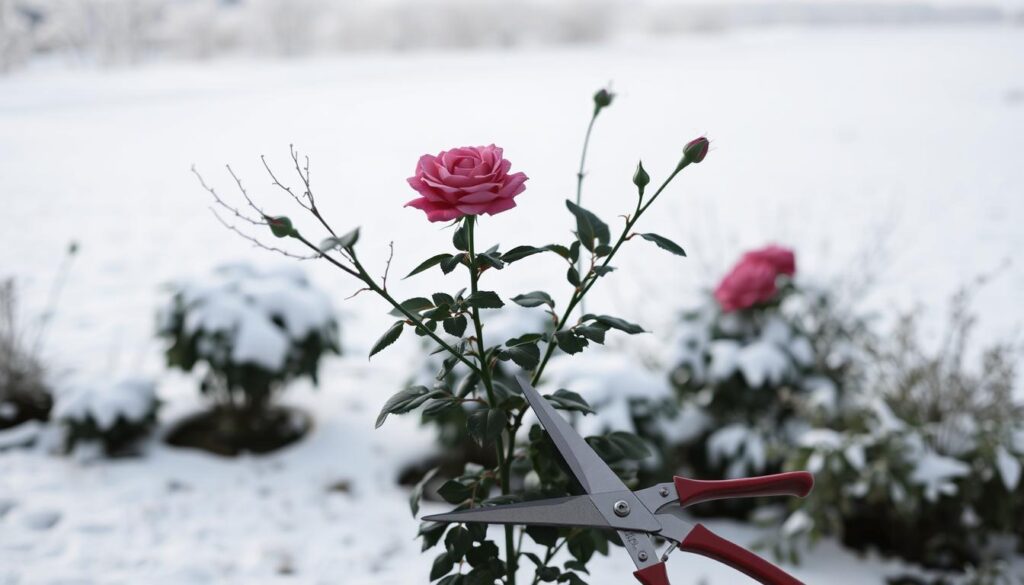
| Plant Type | Pruning Time | Pruning Tips |
|---|---|---|
| Deciduous Trees and Shrubs | February | Prune while dormant, remove dead or diseased branches |
| Fruit Trees and Bushes | February | Prune for optimal growth, remove crossing branches |
| Ornamental Vines | February | Prune based on group classification, remove dead or diseased branches |
| Perennial Flowers | Late Winter or Early Spring | Prune to promote healthier plant growth, remove dead or diseased branches |
Proper Pruning Techniques for Cold Weather
Trimming plants in cold weather needs careful steps for a healthy garden. A february pruning guide suggests pruning certain plants like deciduous trees and shrubs. Fruit trees and ornamental vines are also good candidates.
Prune on a mild, dry day, starting with dead and diseased branches. This stops disease spread and encourages growth. For example, clean cut methods mean making precise cuts just above a bud or lateral branch. Use sharp, clean tools to avoid damaging the plant.
Clean Cut Methods
Pruning in cold weather requires the right angle and position. Cut at a 45-degree angle, about 1/4 inch above a bud. This helps water run off and lowers disease risk. Think about the plant’s size and desired shape, considering its natural growth.
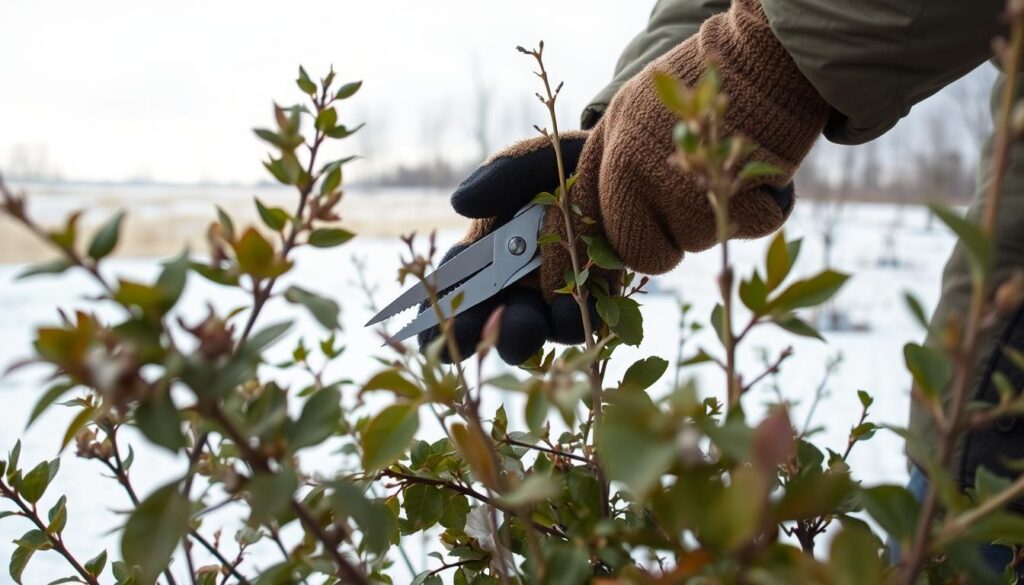
Angle and Position Guidelines
Some important pruning tips for cold weather include:
- Prune deciduous trees and shrubs from November to March, when they’re dormant.
- Cut back ornamental vines and perennials to encourage new growth and prevent overgrowth.
- Remove dead and diseased branches to stop disease spread and promote healthy growth.
By following these tips and using the right techniques, your garden can thrive even in winter. Always focus on clean cuts, proper angles, and consider the plant’s size and type.
Plants to Avoid Pruning in February
When it comes to february garden maintenance, knowing which plants to prune and which to avoid is key. Pruning at the wrong time can harm or even kill some plants. For example, spring-flowering shrubs like azaleas should not be pruned in February. This is because they bloom on old wood, and pruning them then can cut down their spring flowers.
A february pruning checklist should list plants to avoid pruning. Lilacs, magnolias, and crabapple trees are examples of plants that shouldn’t be pruned in February. These plants set their flower buds in the fall. Pruning them in late winter can lessen their spring bloom. It’s also important to know the specific pruning needs of each plant, as some need pruning at different times.
A winter shrub pruning guide can offer valuable tips on pruning different shrubs. For instance, some flowering shrubs like hydrangeas and lilacs bloom on both old and new wood. This makes pruning them more complex. It’s vital to understand each plant’s growth patterns and pruning needs to prune them correctly.
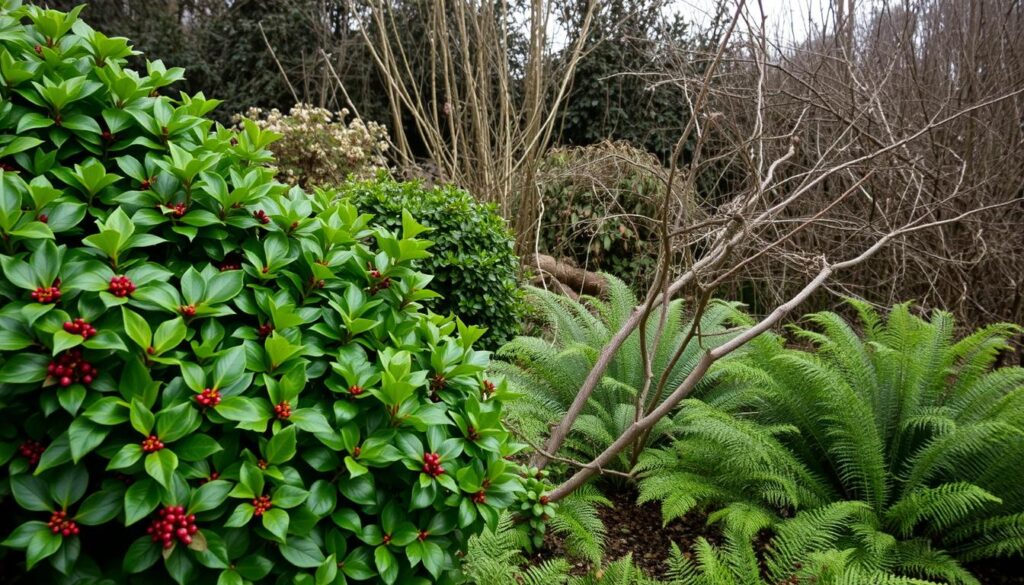
By not pruning these plants in February, you can help ensure a healthy and vibrant bloom in the spring. Always check the specific pruning needs for each plant to give your garden the best care.
| Plant | Pruning Time |
|---|---|
| Azaleas | After blooming |
| Lilacs | After blooming |
| Magnolias | After blooming |
Common Winter Pruning Mistakes and How to Avoid Them
Many gardeners make mistakes in February pruning that can harm their plants. One big mistake is over-pruning, which stresses the plant and can lead to disease or pests. It’s key to follow a February plant trimming guide and understand winter pruning techniques.
A February pruning tips guide suggests pruning dead and diseased branches first. Then, remove unwanted lower branches on evergreen shrubs and trees. This keeps the plant healthy and encourages growth. Also, using the right tools and keeping them clean is vital to prevent disease spread.
Some common winter pruning mistakes include:
- Pruning at the wrong time, which can reduce flowering or fruiting
- Not removing dead or diseased wood, which can increase the risk of pest infestations
- Using dull tools, which can tear the plant’s tissues and lead to infection
By following these February pruning tips and avoiding common mistakes, gardeners can keep their plants healthy and thriving. Always use clean and sharp tools, and prune with a purpose. With the right winter pruning techniques, you can enjoy a beautiful and productive garden all year round.
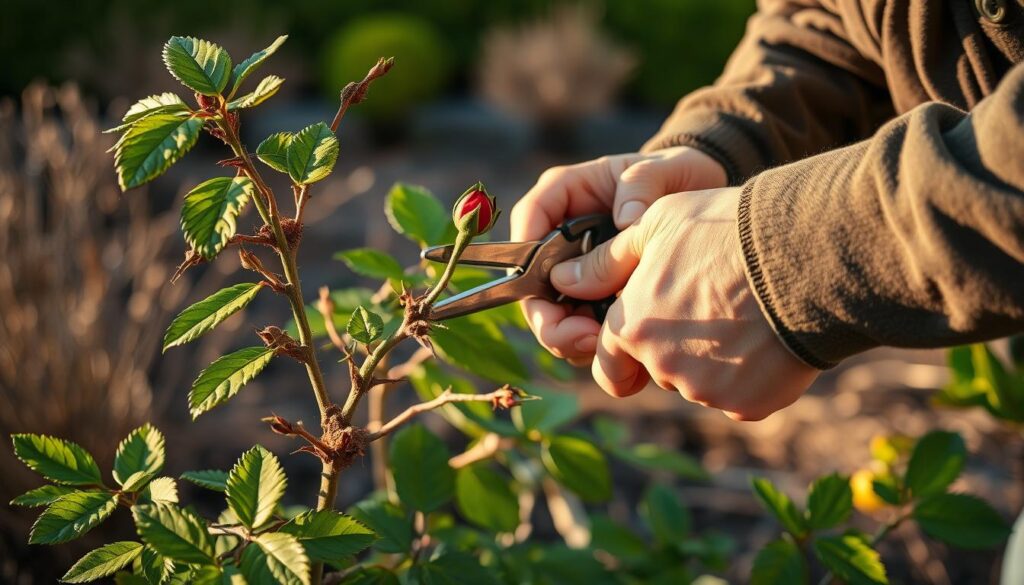
| Plant Type | Pruning Tips |
|---|---|
| Deciduous Trees | Prune dead and diseased branches first, then remove unwanted lower branches |
| Evergreen Shrubs | Prune dead and diseased branches first, then remove unwanted lower branches |
Conclusion: Setting Your Garden Up for Spring Success
Proper pruning in February is key for a great spring garden. It helps plants grow strong and healthy. This way, they’re ready for spring’s busy season.
February is the best time to shape your plants and remove dead parts. This encourages new, vibrant growth. It’s a chance to make your garden look its best.
Every plant needs different care when pruning in February. Knowing what each plant needs helps your garden thrive. This way, your pruning schedule matches their growth cycles perfectly.
With the right pruning, your garden will bloom beautifully in spring. It will be full of life and color. So, spend time pruning in February. Your garden will thank you with a vibrant spring.
FAQ
What plants can be pruned in February?
Our winter pruning guide covers the best plants to trim in February. This includes deciduous trees and shrubs, fruit trees and bushes, ornamental vines, and perennial flowers.
Why is February an ideal time for winter pruning?
February is perfect for winter pruning. It’s because plants are dormant, which helps prevent disease and prepares them for spring.
What essential tools are needed for successful winter pruning?
We talk about the need for the right pruning shears and loppers. Keeping tools sharp and clean is also key to prevent disease spread.
What are the proper pruning techniques for cold weather?
Our guide explains the importance of clean cuts and the right angle. It also stresses considering the plant’s size when pruning in cold weather.
Which plants should be avoided when pruning in February?
We discuss plants that bloom on old wood. These should not be pruned until after they’ve finished blooming.
What are the common winter pruning mistakes and how can they be avoided?
Our guide warns against over-pruning and pruning at the wrong time. It also emphasizes the need to keep tools in good condition to avoid common mistakes.


